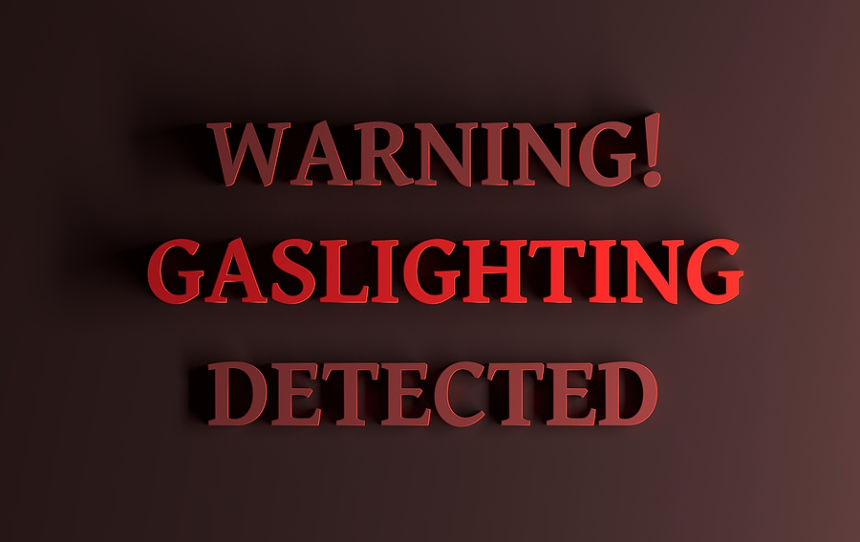We sometimes come across emotionally abusive and manipulative individuals in relationships as well as in the workplace. Gaslighting behaviour sows seeds of doubt and forces people to question their memory, perception, and judgement. According to Dr Amanda Fergusson, a Sydney-based organisational psychologist, gaslighting is a form of emotional bullying and is typically demonstrated by a person with a narcissistic personality.
What does gaslighting mean?
It can often be difficult to spot a gaslighter at work as they tend to work in a furtive, subtle manner, and the signs may not be obvious. For instance, they may spread rumours about the person’s ability or stability, or hide their belongings. The underlying purpose of gaslighting is to create delusions by psychologically manipulating the person. Gaslighters can be in the form of managers, supervisors, scheming coworkers, or even clients. Gaslighting may target individuals or groups.
The following attributes differentiate gaslighting from other forms of harassment on the job:
- The negativity is propagated on the basis of bias and speculation and not on hard facts, data, evidence, or results.
- The objective is to create an unfavourable narrative about the individual or group and sabotage their personal and professional reputation/s.
- The mistreatment persists despite recognition, effort and performance on the part of the targeted employee.
- If approached directly on the matter, the gaslighter usually resorts to aggression, stone-walling, defensiveness, or evasiveness.
- The negative publicity is based on falsehoods and may pervade every interaction, such as individual and group meetings, customer reviews, performance evaluations, and memorandums.
One of the most distinct traits of a gaslighter is known as ‘splitting’. This involves praising or idealising the target and then devaluing them. Gaslighters respond negatively to a refusal and typically redouble their efforts to target the victim. It can undermine the victim’s self-confidence and perceived reality about themselves.
Is there a gaslighter working behind the scenes?
Gaslighters are invariably persistent and sustained in their efforts to psychologically manipulate the target and destroy their confidence. They are invariably personalities with a low sense of esteem and security and are narcissistic by nature. They target a person when they feel threatened by their performance, competence, popularity or efficiency.
You could be the target of gaslighting behaviour if you find yourself doing any of the following:
- Apologising for situations and problems that are not your fault
- Second-guessing yourself and feeling confused about what is expected from you
- Feeling neurotic and sensitive, and doubting your recollection of facts and events
- No longer trusting your judgements and starting to defer to other people’s opinions
- Noticing items appearing at and disappearing from your desk/work station
- Experiencing ‘ganging up’ behaviour from a group.
Gaslighters often have strong complexes and use intimate organisational knowledge to manipulate people they perceive as threats. They are often incompetent and use gaslighting to camouflage their own weakness. Here are some additional indications of a gaslighter working behind the scenes:
Sabotaged projects
Gaslighters often sabotage projects and the target’s reputation in the eyes of the manager or other colleagues in a covert, underhanded manner. They often accuse other people of doing what they themselves do and project their feelings onto others.
Harassment
When your manager or colleague harasses you, they ensure that people disbelieve you and think poorly of you. You may eventually start to question your version of events and your reality, which is precisely the goal of gaslighting behaviour.
How to deal with a gaslighter at work
Gaslighting behaviour can occur vertically (between a manager and subordinates) or horizontally (between co-workers). Gaslighters tend to operate very subtly and elegantly, and visibility is what distinguishes them from bullies. They frequently exaggerate, become aggressive when confronted and project a false impression, and they rarely admit to having flaws. Gaslighting often creates an unpleasant, toxic and unsafe atmosphere that affects everyone directly or indirectly involved.
It’s a good idea to record as much information as possible regarding dates, times, and events before approaching the gaslighter. Eliminating gaslighting behaviours involves a high level of accountability at senior levels, as divisive, incompetent and manipulative behaviour needs to be addressed and nipped in the bud. In extreme cases, the employee may need to be put on a performance improvement process, or even face disciplinary action. Many gaslighters will claim harassment or unfair behaviour. It’s best to hire professionals to investigate the situation and recommend solutions.
ESN is a full-service organisational HR/psychological consultancy that delivers tailormade solutions for public- and private-sector organisations. We work closely with your managers and teams to create healthy, productive work environments for all your employees. Our dedicated team of professionals helps organisations manage a number of challenging situations. In addition, we are well experienced in investigating alleged gaslighting behaviours.
Article References
https://www.hrmonline.com.au/how-tos/gaslighting-at-work-how-do-you-manage-it/
https://www.shrm.org/resourcesandtools/tools-and-samples/exreq/pages/details.aspx?erid=1614





